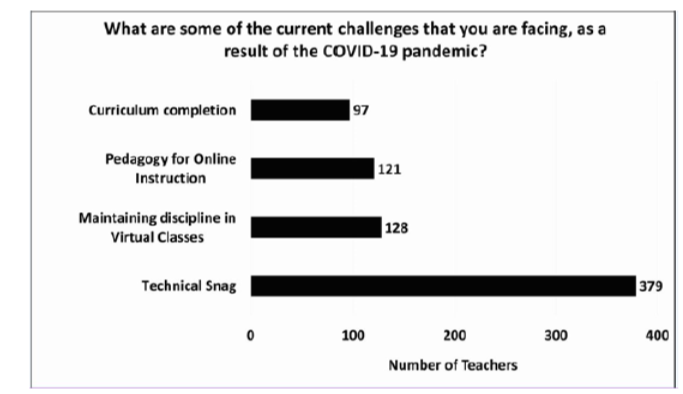


Indian Journal of Science and Technology
DOI: 10.17485/IJST/v13i38.1613
Year: 2020, Volume: 13, Issue: 38, Pages: 4036-4054
Original Article
Harish Tyagi1, Seema Malik2*
1Assistant professor, Amity University, Noida, India
2Principal, Salwan public school, Mayur Vihar, New Delhi, India
*Corresponding Author
Email: [email protected]
Received Date:07 September 2020, Accepted Date:04 October 2020, Published Date:30 October 2020
Objectives: The spread of Covid 19 brought a sudden closure of schools in India, forcing them to take teaching completely online. This was an unprecedented situation in Indian schools where virtual teaching was never the norm. The pace of this technical intervention was so fast that it practically brought an educational revolution in the country. This led the researcher to conduct a survey for the teachers as well as students with the objectives to understand : 1. The major challenges faced by both the teachers and students, 2. The opportunities offered by the online teaching platform, 3.The attributes of online classes that can enhance the learning process, and 4. The lessons to be learnt about the efficacy of virtual classes. Methods: A survey was conducted for more than 500 teachers and approximately 1700 students of ten schools in Delhi National Capital Region in India. A questionnaire was administered to them through google forms. These schools were geographically scattered in the national capital region of Delhi and cater to different socio-economic backgrounds. Findings: Online teaching in Indian schools is still in its infancy and is gradually getting more popular since it is now the need of the hour. Technical issues are the biggest challenge for teachers and students and connectivity causes major problems. The pedagogy required for online teaching needs refinement. Both teachers and students have expressed that they have faced health issues with greater exposure to screen time. Absence of face-to-face interaction of teachers and students affects the teaching learning experience. Novelty: This study provided valuable insight into refining the practices of online teaching and learning, a hitherto less explored field, in Indian scenario. It gives the perception of both teachers and students regarding the procedure of online teaching.
Keywords: Online teaching; elearning; virtual classes; synchronous learning; asynchronous learning
© 2020 Tyagi & Malik.This is an open-access article distributed under the terms of the Creative Commons Attribution License, which permits unrestricted use, distribution, and reproduction in any medium, provided the original author and source are credited. Published By Indian Society for Education and Environment (iSee).
Subscribe now for latest articles and news.